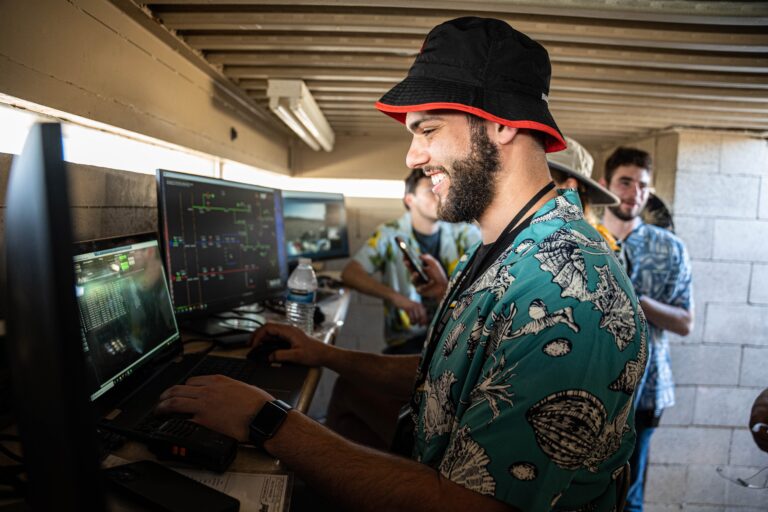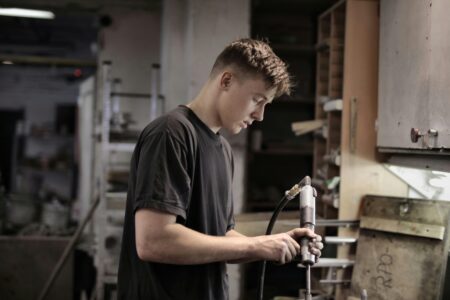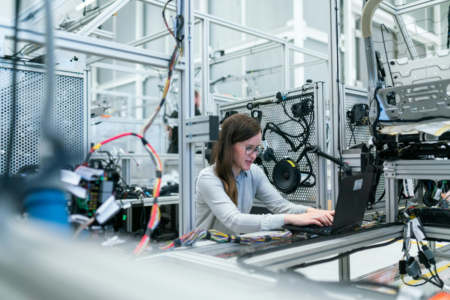
Aeronautics and Astronautics, the engineering fields that propel us through the air and into the cosmos, remain ever-relevant. From the commercial airliners that crisscross the globe, like Boeing’s 787 Dreamliner, to the ingenuity behind SpaceX’s Falcon 9 rockets launching satellites, these disciplines are constantly pushing the boundaries of flight.
Research-based graduate programmes in Aeronautics and Astronautics offer a chance to go deeper, equipping students with advanced knowledge in aerodynamics, propulsion, and spacecraft design. This specialised knowledge skillset is crucial for tackling challenges like improving fuel efficiency for aircraft or designing the next generation of deep space probes.
Graduates with these qualifications are highly sought after by industry giants such as Airbus, NASA and private spaceflight companies like Blue Origin. They play a vital role in shaping the future of transportation, communication, and scientific exploration, ensuring humanity continues its ascent to new heights. If this is something that you aspire to achieve, here are three leading universities that you can consider:

At Purdue University, students can conduct hands-on research into propulsion technologies at Zucrow Laboratories, the largest university propulsion lab in the world. Source: Purdue University
Purdue University
Founded in 1869, Purdue University, a top-ranked public university in West Lafayette, Indiana, is renowned for its rigorous and experiential programmes that prepare students for successful careers. The School of Aeronautics and Astronautics at Purdue University is exemplary of this. It ranks sixth in US News and World Report’s list of top aerospace graduate programmes.
Graduate programmes offered here include the MS non-thesis, Professional MS with Engineering Leadership focus, MS thesis, and PhD programmes. Whichever programme you choose, you’ll learn from world-renowned experts conducting cutting-edge research in Aerodynamics, Aerospace Systems, Astrodynamics and Space Applications, Autonomy and Control, Propulsion and Structures and Materials.
Pair that with Purdue’s world-class research facilities, and you’ll have an enriching experience and education here. The Zucrow Laboratories complex is the largest university facility in the world for studying aviation and aerospace propulsion. The school is at the forefront of hypersonics research and is expanding its facilities with cutting-edge innovations. There are also exceptional resources in composite materials, including an industrial-scale manufacturing and testing facility. One of the largest, if not the largest, indoor Unmanned Aerial System (UAS) test facilities in the world, is here too.
With such programmes and facilities, many graduates go on to make “giant leaps” in their careers. Purdue produces the most aerospace engineering graduates in the US — with many going on to succeed in the field. For example, Sirisha Bandla’s journey from a Purdue graduate to a commercial spaceflight pioneer is a testament to the career-making opportunities the school provides. Another graduate, Julie Kramer White, is now director of engineering for NASA’s Johnson Space Center and was chief engineer on the Orion capsule that will send humans back to the Moon and Mars. To follow in their footsteps, apply to the School of Aeronautics and Astronautics today.

The graduate programme in the University of Tokyo’s aerospace engineering offers in-depth studies and advanced research across Fluid Dynamics, Structures and Materials, Flight Dynamics and Control, and Propulsion. Source: University of Tokyo
University of Tokyo
The University of Tokyo’s Department of Aeronautics and Astronautics boasts a rich history. Established in 1918, it was briefly closed after World War II before being reorganised and expanded in 1954 to keep pace with the rapid advancements in aeronautics and space technology. Today, the department offers robust graduate programmes that reflect the growing sophistication of the field.
Approximately 70% of graduates pursue further studies at the department’s esteemed graduate school. The remaining graduates succeed in national research labs and relevant industries, including aircraft and space, automobile, and heavy industries.
Here, students can pursue a two-year Master’s degree or a three-year Doctorate programme, with an intake of around 15 doctoral students per year. The department focuses on the science and engineering behind aircraft and spacecraft, encompassing fixed-wing aircraft, helicopters, V/STOL vehicles, rockets, and space vehicles. Recognising the field’s rapid evolution, the department offers up-to-date courses in aerodynamics, propulsion, flight dynamics, instrumentation and control, structural mechanics, materials science, and system design.
To cater to individual interests, the department provides specialised courses in Aerospace Engineering and Aerospace Propulsion. The graduate programme goes beyond classroom learning, providing opportunities for in-depth research. Students actively participate in cutting-edge research projects. The programme is further structured into four research groups: Fluid Dynamics, Structures and Materials, Flight Dynamics and Control, and Propulsion.
The department’s Center for Aviation Innovation Research takes a holistic approach, examining aviation advancements from technical, policy, and economic perspectives. The centre also hosts international seminars, workshops, and symposia. What’s more, students benefit from the department’s exceptional faculty and access to state-of-the-art facilities like shock tube, hypersonic wind tunnel, transonic cascade tunnel, aerospace environmental testing facilities and many more.

The Aeronautical and Astronautical engineering programmes at the University of Southampton are accredited by the Royal Aeronautical Society. Source: University of Southampton/Facebook
University of Southampton
The University of Southampton has a rich history in aerospace engineering, offering programmes since the 1930s. This legacy extends to its graduates, some of whom made aviation history three decades later with the world’s first human-powered flight. Today, Southampton continues to produce highly sought-after graduates who significantly contribute to the space industry, aerospace, and defence sectors.
The university’s four-year aerospace engineering programme equips students with a strong foundation for future endeavours. The first two years focus on theoretical knowledge, covering subjects like aircraft aerodynamics, propulsion, avionics, and structural design. As students progress, the programme transitions to a more practical approach. They gain hands-on experience through workshops, design studios, and industry visits. These opportunities provide valuable insights into potential career paths and the realities of the field.
Programmes offered here include the MSc in Aerodynamics and Computation, MSc in Race Car Aerodynamics, and MSc in Space Systems Engineering. Take the MSc in Space Systems Engineering for an example. Developed by the university’s world-renowned Astronautics Research Group and endorsed by the UK Space Agency, this programme equips you with the expertise to design entire space systems. What’s more, you will gain in-depth knowledge of how various subsystems function and interact to create a cohesive whole.
Academic rigour is just one facet of the Southampton experience. Students are actively encouraged to participate in individual and group design projects, as well as conduct their own research projects. The best part? You’ll do all these honing with the support of world-class facilities that include a spacecraft propulsion laboratory, wind tunnels, an autonomous systems test bed, and a shaker table.
For Oliver Hitchens, a graduate of the Aeronautics and Astronautics / Spacecraft Engineering (MEng) course, however, the best thing about Southampton was “meeting a diverse range of people that I can now call my friends.”
*Some of the institutions featured in this article are commercial partners of Study International










